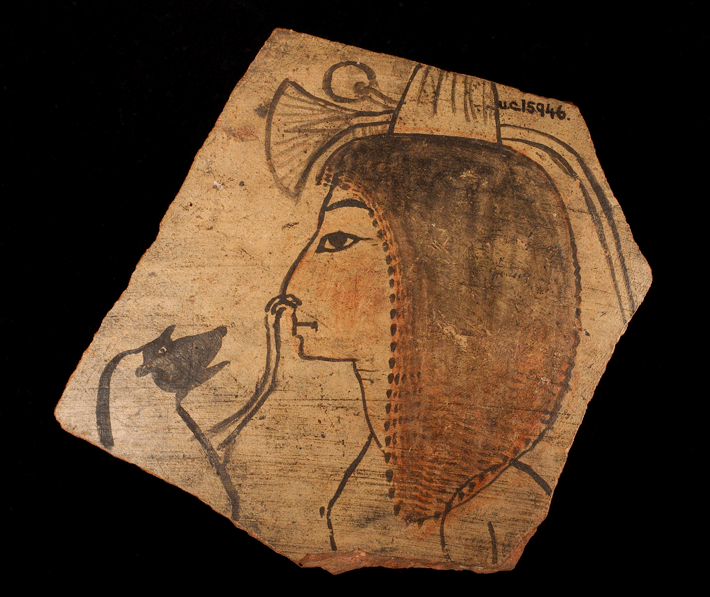Artifact
November/December 2014
Culture
Date
Material
Found
Dimensions

For the ancient Egyptians, death was not the end, but a rest stop on the way to a complicated, demanding, and sometimes dangerous journey to the afterlife. One of the important events along this path was a ritual called the “Opening of the Mouth,” during which the dead, in the form of an inanimate object such as a cult statue or tomb painting, or an actual deceased person—likely a mummy—was symbolically brought back to life by a priest. This small piece of pottery may be evidence that the ancient Egyptians also loved a good joke, even one at the expense of their most sacred rituals.
Discarded potsherds, called ostraca, were inexpensive and readily available across the ancient world, and were used as a kind of paper. This ostracon was found by archaeologist Flinders Petrie in the late nineteenth century in an area identified as an artists’ school behind the Ramesseum, a large temple across the Nile from ancient Thebes. More than 3,000 years ago, a student painted this image of a girl, who is depicted in profile, the traditional way of representing a statue. Perhaps this was a practice sketch—although one executed with not inconsiderable skill. According to Egyptologist Stephen Quirke of University College London, by adding a depiction of a monkey, the student may have been attempting to create a caricature of the “Opening of the Mouth” ritual.